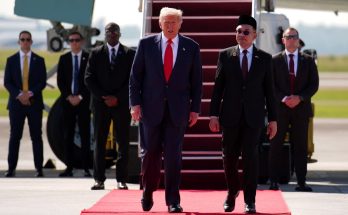 After a huge win in the general election in May this year, the Bharatiya Janata Party (BJP) has also captured political power in Haryana and Maharashtra by winning assembly election convincingly.
After a huge win in the general election in May this year, the Bharatiya Janata Party (BJP) has also captured political power in Haryana and Maharashtra by winning assembly election convincingly.
Today, the BJP is in power not only at the Centre but also in Chhattisgarh, Goa, Gujarat, Haryana, Punjab, Madhya Pradesh, Maharashtra and Rajasthan. While in Punjab, it is a partner in a coalition government with the Shiromani Akali Dal; in the rest seven states it is on its own.
In the coming assembly election in states of Jammu & Kashmir and Jharkhand, the BJP is likely to emerge as the single largest party. It may, if not on its own, become the part of the government in alliance with other parties. This may bring its tally to 10 states.
Year 2014 has witnessed unprecedented rise of the BJP and marginalisation of all other political parties. The assembly elections as well as the Lok Sabha polls have adversely impacted the political fortunes of smaller, regional parties with a number of independents also coming down.
Both Jharkhand as well as J&K elections are politically very crucial in more than one aspect. In both these states, regional and smaller parties have historically played a significant role. Often enough, regional parties have formed and led the state governments.
Battle for Kashmir
I n J&K, the BJP is making a determined effort to not only capture the political support base of the other national party –the Indian National Congress — but is also striving to minimise the importance of regional parties like the National Conference (NC) and Peoples Democratic Party (PDP).
n J&K, the BJP is making a determined effort to not only capture the political support base of the other national party –the Indian National Congress — but is also striving to minimise the importance of regional parties like the National Conference (NC) and Peoples Democratic Party (PDP).
Last elections were held in 2008 when the National Conference, by winning 28 seats, had emerged as the single largest party and formed a coalition government under a young Chief Minister, Omar Abdullah, whose family has been in power directly or indirectly for over four decades.
The Congress had won 17 seats and the Peoples Democratic Party (PDP) had 21 seats in a house of 87. The BJP has strength of 11 MLAs in the assembly while others had captured 10 seats in the last election when a record 61 per cent polling had taken place.
Since 2008 much has changed in the state as the BJP went on win three seats, capturing two from Jammu and one from Ladakh. The PDP won all the three Lok Sabha seats from the Valley, shoving both the NC as well as the Congress to political margins of the state. For the first time NC supremo Farooq Abdullah, who was a cabinet minister in the Manmohan Singh government, lost his election from Srinagar where the PDP candidate trounced him by 42000 votes.
Since the Lok Sabha elections, the NC has further lost ground. The worst-ever floods in the state in September this year and the NC government’s inefficient handling of the natural calamity has further added to the NC’s woes. Similarly, the Congress’s political fortunes in the state seems to be at the lowest ebb as neither in the state nor nationally has it been able to regain political ground in last five months.
In this background, the electoral battle is likely to be fought mainly between the PDP and the BJP with the NC and the Congress trying to remain politically relevant by winning few seats if they can.
The contest is going to be four cornered with smaller parties and independents contributing to the vote division. The PDP is strong in the Valley while the BJP has its eyes on the Jammu and Ladakh regions. The BJP is leaving nothing to chance to make a dent in the Valley too. It is going to field candidates in the Valley and if the Congress’ traditional votes even marginally shift to the BJP whose possibility is strong then there is a strong likelihood of the saffron party emerging as the single largest party.
Jharkhand: Poll roulette
In Jharkhand too, the BJP will be against host of regional parties like the Jharkhand Mukti Morcha, the Rashtriya Janata Dal, the Janata Dal (United), Jharkhand Vikas Morcha (JVM), All Jharkhand Students Union (AJSU) and others. The Congress, after its alliance with the JMM collapsed on the eve of election, has been trying to enter into electoral alliance with the RJD and JD (U) on the line of Bihar.
In the 2009 assembly elections, the BJP and the JMM had won 18 seats each. The Congress had 13 seats in the house of 82. The JVM had the AJSU, the RJD, the JD (U) and others had 11, 6, 5, 2 and 6 seats respectively. There were two independent MLAs. None of the parties had a clear majority.
The BJP had done reasonably well in 2005 elections when it had won 30 seats but after that its strength was reduced to 18 in 2009. There was a remarkable revival of BJP’s political fortunes in the general elections as it went on to win 10 Lok Sabha seats leaving rest of 2 seats to the JMM.
Nothing much has changed since the Lok Sabha polls rather the BJP has been able to win Haryana and Maharashtra which is a sure indication of Prime Minister Narendra Modi’s continuing appeal to the country’s electorate.
The JMM and the Congress, being handicapped by the anti-incumbency factor, are obviously not the preferred choices and therefore the state’s electorate yearning for a change is likely to go in for the BJP.
The BJP is in government in most of the Hindi-speaking north India with Uttarakhand, Bihar and Uttar Pradesh being exceptions.
In 2015, elections are due in Bihar only, though Delhi may also witness elections. Bihar would again be a fight between the BJP and other regional parties because the Congress has become too small to be in a position to give effective challenge to the saffron might. It will have to be the part of the bigger alliance of secular forces to be able to give credible fight to the BJP in the state.
The BJP’s major challenge is in Uttar Pradesh where assembly elections are due in 2017. The BJP, which went on to win 71 seats, will be the main challenger to two regional parties namely the ruling Samajwadi Party (SP) and the Bahujan Samaj Party (BSP).
While the SP would be burdened by five years of rule rather misrule, the main contest would be between the BJP and the BSP. The BJP’s chance to come to power in 2017 in the biggest state are bright today if elections were to be held now but anything can happen between now and then.
Regional parties, which emerged in north India after 1989 general election particularly after the implementation of the Mandal Commission recommendations by the VP Singh government, appear to be rapidly losing their political ground leaving the space to the BJP.
With the consolidation of political power, the economic reforms process would gather momentum as the BJP-ruled government would increasingly acquire more seats in the Rajya Sabha.
Main credit for the spectacular spread of the influence of the BJP goes to Prime Minister Narendra Modi who has come be the sole power centre in the party while the RSS continues to be another centre of clout in the new arrangement. The entire decision-making power is now concentrated in his hands while other decision-making forums in the party respect and follow his command.
The Prime Minister’s Office (PMO) has again become all powerful and it is Modi all the way now. He is governing like the US president and does not seem to be ready to share power with anyone. By his regular Radio talks and by constantly remaining in public mind through his event management approach, Modi is not leaving anything to chance.
In his style of functioning, there is not much space for delegation of power to local units of the party. Both tactically as well as strategically, everything is going to be commandeered from Delhi which means all pervasive and all powerful Modi.
(The author is a senior journalist and a Senior Fellow at the Observer Research Foundation)
Author Profile
- India Writes Network (www.indiawrites.org) is an emerging think tank and a media-publishing company focused on international affairs & the India Story. Centre for Global India Insights is the research arm of India Writes Network. To subscribe to India and the World, write to editor@indiawrites.org. A venture of TGII Media Private Limited, a leading media, publishing and consultancy company, IWN has carved a niche for balanced and exhaustive reporting and analysis of international affairs. Eminent personalities, politicians, diplomats, authors, strategy gurus and news-makers have contributed to India Writes Network, as also “India and the World,” a magazine focused on global affairs.
Latest entries
 India and the WorldNovember 26, 2025G20@20: Africa’s Moment – The Once and Future World Order
India and the WorldNovember 26, 2025G20@20: Africa’s Moment – The Once and Future World Order DiplomacyOctober 4, 2025UNGA Resolution 2758 Must Not Be Distorted, One-China Principle Brooks No Challenge
DiplomacyOctober 4, 2025UNGA Resolution 2758 Must Not Be Distorted, One-China Principle Brooks No Challenge India and the WorldJuly 26, 2025MPs, diplomats laud Operation Sindoor, call for national unity to combat Pakistan-sponsored terror
India and the WorldJuly 26, 2025MPs, diplomats laud Operation Sindoor, call for national unity to combat Pakistan-sponsored terror India and the WorldJuly 25, 2025When Fire Ends, Diplomacy Begins
India and the WorldJuly 25, 2025When Fire Ends, Diplomacy Begins







